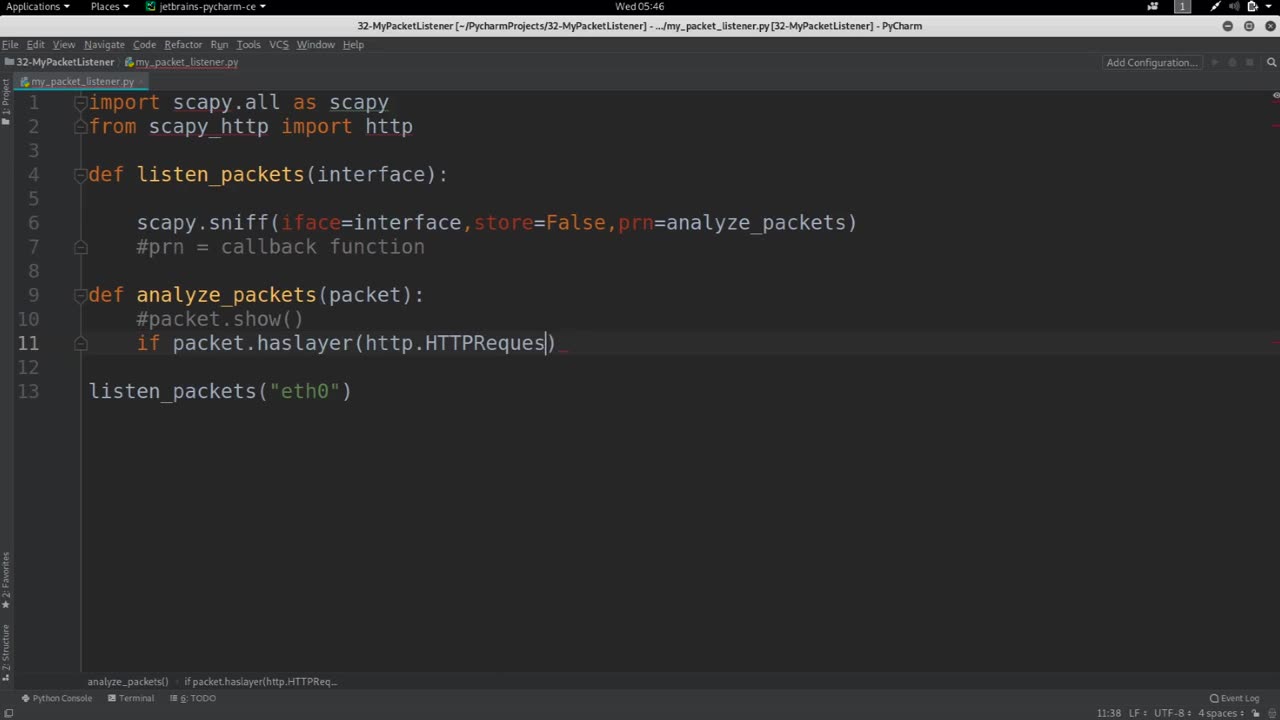Premium Only Content

Chapter-36, LEC-5 |Working With Layers | #ethicalhacking #hacking #education
#ethicalhacking #hacking #rumble #virel #trending #education
Subscribe to our channel YouTube channel.❤️
/@thecybersecurityclassroom
Followe me on Rumble.💕
/@the1cybersequrityclassroom
Working with layers refers to the process of analyzing and understanding the different layers of the OSI (Open Systems Interconnection) model or the TCP/IP (Transmission Control Protocol/Internet Protocol) model, which are two commonly used models for understanding and organizing network communication protocols.
The OSI model and the TCP/IP model both divide the complex process of network communication into multiple layers, each with its own specific functions and responsibilities. Understanding these layers and how they interact with each other is crucial for network administrators, engineers, and analysts to effectively troubleshoot, diagnose, and optimize network performance.
Here's a general overview of the layers in the OSI model and the TCP/IP model:
OSI Model:
1. Physical Layer: This is the lowest layer and deals with the physical transmission of data over the network, such as the electrical, mechanical, and physical characteristics of the network medium, such as cables, switches, and hubs.
2. Data Link Layer: This layer is responsible for establishing and maintaining reliable communication links between adjacent network nodes, such as switches and bridges. It also handles error detection and correction at the data link level.
3. Network Layer: This layer provides routing and addressing functions to establish communication between different networks. It determines the optimal path for data packets to reach their destination and handles logical addressing, such as IP addresses.
4. Transport Layer: This layer is responsible for ensuring reliable communication between end-to-end devices, such as computers or servers. It provides mechanisms for segmentation, flow control, error recovery, and reassembly of data.
5. Session Layer: This layer establishes, maintains, and terminates sessions between applications running on different devices. It also manages session synchronization and recovery in case of failures.
6. Presentation Layer: This layer is responsible for data representation and translation, such as converting data into a format that can be understood by different systems. It also handles encryption, compression, and other data formatting tasks.
7. Application Layer: This is the topmost layer and provides the interface between the network and the applications running on end devices. It includes protocols for specific applications, such as HTTP for web browsing, SMTP for email, and FTP for file transfer.
TCP/IP Model:
1. Link Layer: This layer is similar to the OSI Data Link Layer and is responsible for the physical transmission of data over the network medium.
2. Internet Layer: This layer is similar to the OSI Network Layer and handles routing, addressing, and packet fragmentation for data packets to travel across different networks.
3. Transport Layer: This layer is similar to the OSI Transport Layer and provides reliable communication between end-to-end devices, such as computers or servers, using protocols like TCP (Transmission Control Protocol) or UDP (User Datagram Protocol).
4. Application Layer: This layer is similar to the OSI Application Layer and includes protocols for specific applications, such as HTTP, SMTP, FTP, and DNS (Domain Name System).
Working with layers involves understanding the functions, protocols, and interactions of each layer, as well as how they impact the overall network communication. It requires knowledge of network protocols, network devices, and network topologies, and it is essential for troubleshooting network issues, optimizing network performance, and ensuring secure and efficient network communication.
#hacking #growthhacking #biohacking #ethicalhacking #lifehacking #whacking #hackingout #happyhacking #brainhacking #travelhacking #househacking #brainhackingum #hackingtools
#bushwhacking #hacking_or_secutiy #porthacking#porthacking #belajarhacking #hackinginstagram #growthacking #biohackingsecrets #realityhacking #neurohacking #hackingnews #funnelhacking #mindhacking #funnelhackinglive #hackinglife #termuxhacking #learnhacking #bodyhacking #patternhacking #biohackingsuccess #ikeahacking #hackingorsecurity #russianhacking #traumahacking #shackingup #hackinghealth #growthhackingtips #wifihacking
-
 2:04:26
2:04:26
Nerdrotic
6 hours ago $0.93 earnedThe Program: The Government's UFO Cover Up Programs | Forbidden Frontier #085
36.3K6 -
 2:13:07
2:13:07
vivafrei
8 hours agoEp. 243: HOLIDAY SPECIAL! The Great H1B Visa Debate! Jay z Gets Scorched! Attack in Germany! & MORE!
111K252 -
 16:40
16:40
Russell Brand
10 hours agoTHIS MASSIVELY BACKFIRED...
122K433 -
 25:41
25:41
SB Mowing
14 hours agoPICTURE living next to THIS and not knowing what to do…
69.1K27 -
 2:16:01
2:16:01
George Galloway
1 day agoNEW YEAR COUNTDOWN - MOATS with George Galloway - EP 408
90.4K125 -
 18:39
18:39
Stephen Gardner
9 hours ago🔥BREAKING! Trump's SHOCKING New Demand | Biden admits DOJ TARGETED Trump Illegally!
70.7K326 -
 1:20:23
1:20:23
Josh Pate's College Football Show
15 hours ago $1.09 earnedCFP Prediction Special: OhioSt vs Oregon | UGA vs Notre Dame | Texas vs ASU | Boise vs PennSt
102K6 -
 7:50:03
7:50:03
Scottish Viking Gaming
13 hours ago💚Rumble :|: SUNDAY FUNDAY :|: Virginia has two Verginers, Change my Mind!
113K18 -
 1:49:50
1:49:50
Winston Marshall
2 days agoThe DARK Reality of Socialism - Historian Giles Udy
89.4K87 -
 1:09:28
1:09:28
Sports Wars
12 hours agoBengals STAY ALIVE In OT Thriller, ESPN's Ryan Clark SLAMMED, NFL DESTROYS NBA On Christmas
73.4K12